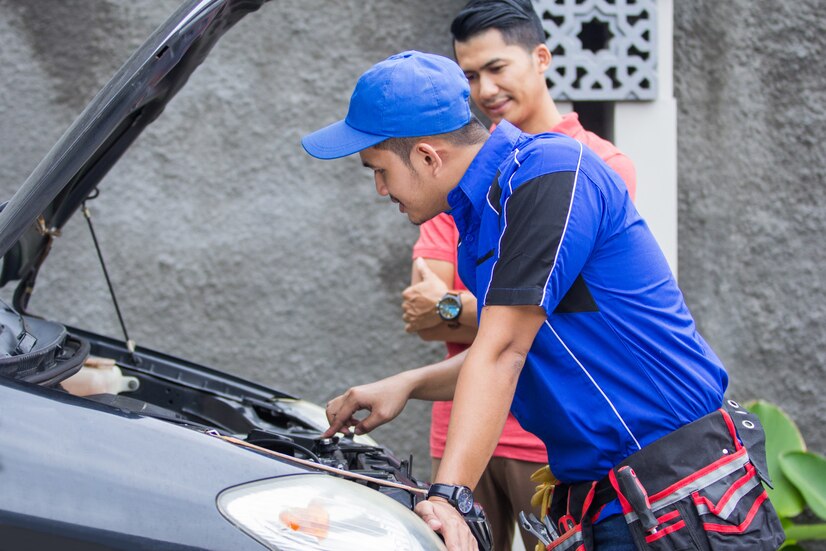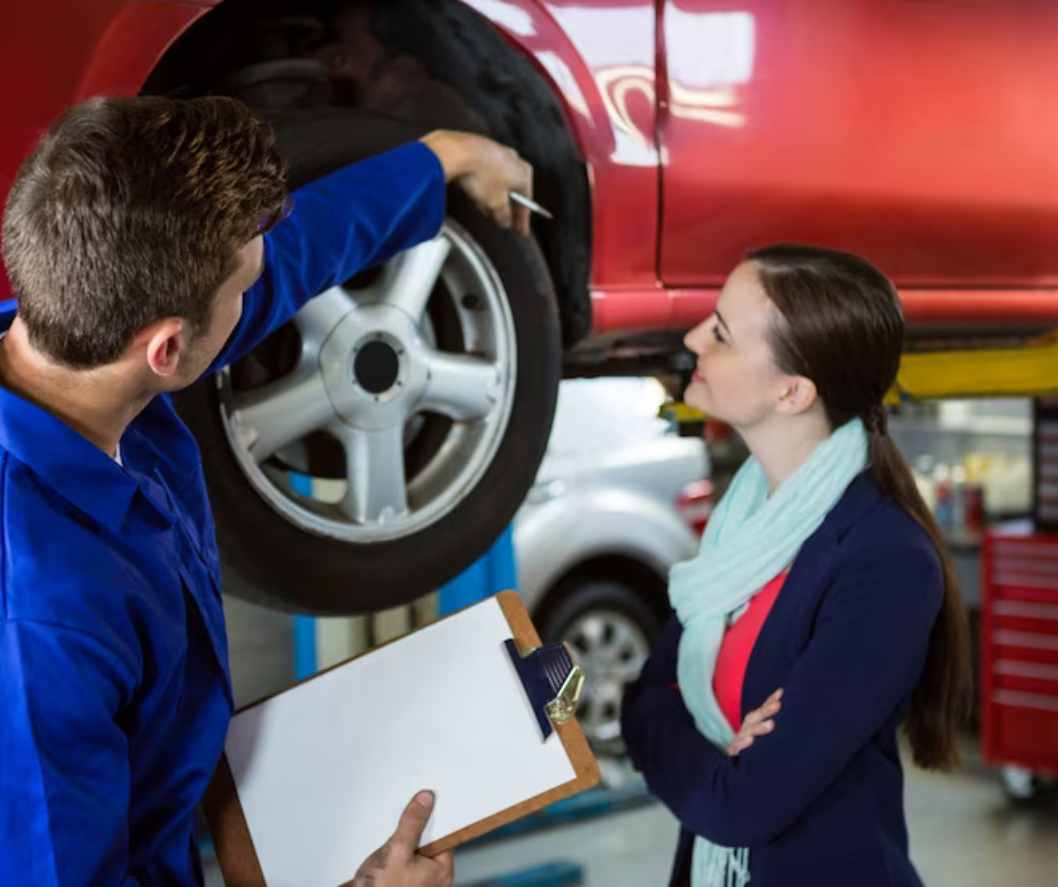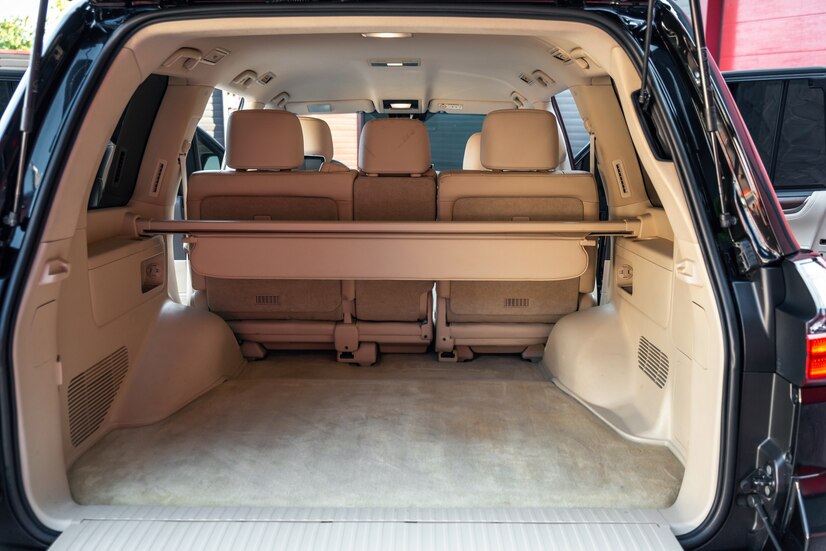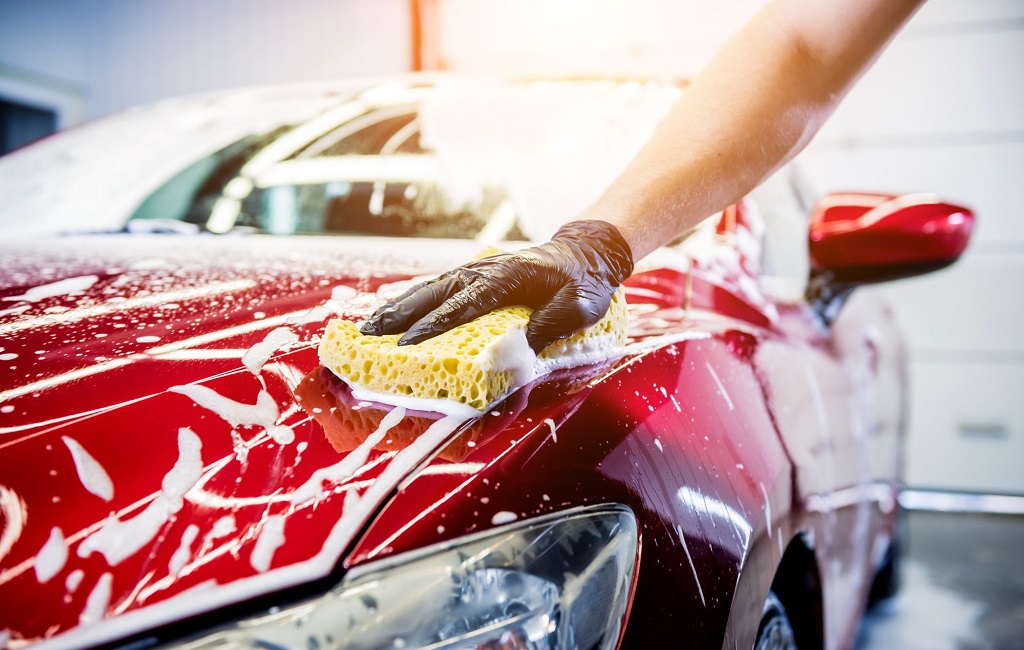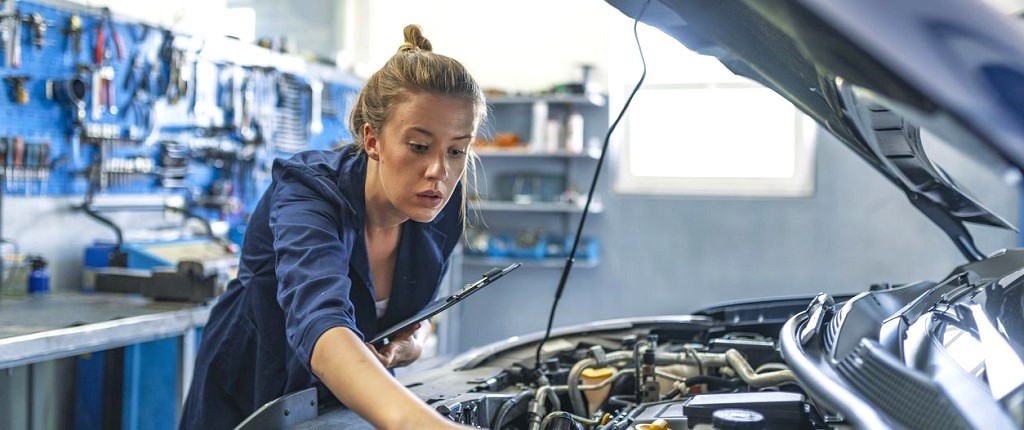Whether you’re a seasoned car enthusiast or a novice driver, understanding the ins and outs of basic car maintenance can save you time, money, and ensure your vehicle’s longevity. Regular car maintenance is essential for the smooth operation of your vehicle, your safety, and the safety of others on the road. In this guide, we’ll explore the various maintenance tasks you can easily perform on your own. From checking fluid levels to replacing wiper blades, you’ll gain the knowledge and confidence to tackle these tasks easily.
Basic Maintenance Tasks
Checking and Topping Up Engine Oil
Engine oil is the lifeblood of your car’s engine. Regularly checking and topping up the engine oil ensures proper lubrication and optimal performance. Begin by locating the oil dipstick, pulling it out, wiping it clean, and reinserting it. Then, pull it out again to check the oil level. If it’s below the recommended level, add the appropriate oil type.
Inspecting and Replacing Air Filters
Air filters are crucial in maintaining clean air flow to your engine. Over time, they can become clogged, affecting your car’s efficiency. Check your air filter regularly and replace it if it’s dirty or damaged.
Monitoring and Refilling Coolant Levels
Proper engine temperature regulation is essential, and coolant plays a vital role. Check the coolant level in the reservoir and add a mixture of coolant and water if needed.
Checking and Maintaining Tire Pressure
Under-inflated or over-inflated tires can impact your car’s handling and fuel efficiency. Use a tire pressure gauge to ensure your tires reach the recommended pressure levels.
Testing and Replacing Windshield Wiper Blades
Clear visibility is crucial for safe driving, especially during adverse weather conditions. Check your wiper blades for any signs of damage and replace them if they leave streaks or make noise.
Fluid Checks and Changes
Understanding the Role of Various Fluids in Your Car
Different fluids, such as brake, transmission, and power steering, have specific roles in your car’s operation. Understanding their functions will help you keep your vehicle running smoothly.
How to Check Brake Fluid Levels
Brake fluid is essential for the proper functioning of your braking system. Locate the brake fluid reservoir, check the level, and top it up if necessary.
When and How to Change Transmission Fluid
Transmission fluid keeps your transmission system running smoothly. Refer to your owner’s manual for recommended intervals and instructions on changing the transmission fluid.
Inspecting and Refilling Power Steering Fluid
Maintaining proper power steering fluid levels ensures easy maneuverability. Check the reservoir and add fluid as needed.
The Importance of Regular Coolant Changes
Over time, coolant can lose its effectiveness. Regularly changing the coolant helps prevent overheating and corrosion within your cooling system.
Battery Maintenance
Cleaning Battery Terminals
Corroded battery terminals can lead to electrical problems. Clean them using a mixture of baking soda and water, then apply petroleum jelly to prevent further corrosion.
Checking Battery Voltage Levels
Use a multimeter to check your battery’s voltage. If it’s consistently low, your battery might be nearing the end of its lifespan.
Jumpstarting a Dead Battery
If your battery dies, having jumper cables and knowing how to jumpstart your car can be a lifesaver. Connect the cables properly and follow the correct sequence.
When to Replace a Car Battery
Car batteries typically last around 3 to 5 years. If you notice your battery struggling to start the engine or other electrical issues, it might be time for a replacement.
Brake System Care
Inspecting Brake Pads and Rotors
Brake pads and rotors wear out over time. Check your brake pads for thickness and inspect the rotors for any signs of damage.
How to Bleed the Brake System
Bleeding the brake system removes air bubbles that can affect brake performance. Follow the recommended procedure to ensure your brakes work effectively.
Replacing Brake Pads at Home
You can replace brake pads at home with the right tools and instructions. Make sure to follow a step-by-step guide for your specific vehicle.
Addressing Brake Fluid Leaks
Brake fluid leaks can lead to decreased braking performance. If you notice fluid under your car or a spongy brake pedal, inspect for leaks and address them promptly.
DIY Oil Change
Gathering Necessary Tools and Materials
Before attempting an oil change, gather the required tools, including a wrench, oil filter wrench, oil drain pan, and new oil filter.
Step-by-Step Guide to Changing Engine Oil
Position your car on a level surface, remove the oil drain plug, and let the old oil drain into a pan. Replace the drain plug, remove the old oil filter, and install the new one. Finally, add the recommended amount of new oil.
Selecting the Right Oil and Oil Filter
Choosing the right oil viscosity and type is essential for optimal engine performance. Refer to your owner’s manual for recommendations.
Disposing of Used Oil Responsibly
Used motor oil is hazardous waste and should be disposed of properly. Many auto parts stores and service centres accept used oil for recycling.
Spark Plug Replacement
Signs That Spark Plugs Need Replacement
Faulty spark plugs can lead to poor fuel efficiency and engine misfires. Look out for signs such as rough idling and decreased acceleration.
Removing Old Spark Plugs
Carefully remove the old spark plugs using a spark plug socket and extension. Avoid damaging the plug wires in the process.
Properly Gapping New Spark Plugs
Check the gap on your new spark plugs using a feeler gauge. Adjust the gap if necessary to ensure proper ignition.
Reinstalling and Testing New Spark Plugs
Insert the new spark plugs and tighten them by hand. Once snug, use a torque wrench to achieve the manufacturer’s recommended torque. Start your engine to ensure proper ignition.
Air Conditioning Maintenance
Cleaning and Replacing Cabin Air Filters
Cabin air filters improve air quality inside your car. Regularly clean or replace them to ensure proper airflow.
Recharging the Air Conditioning System
If your AC isn’t cooling, a refrigerant recharge might be necessary. Consult your owner’s manual or a professional for guidance.
Troubleshooting Common AC Issues
Is your AC not blowing cold air or making unusual noises? Learn how to diagnose and address common air conditioning problems.
Exhaust System Inspection
Checking for Exhaust Leaks
Exhaust leaks can lead to increased emissions and poor fuel efficiency. Inspect your exhaust system for any visible signs of leaks.
Identifying Rust and Corrosion
Rust and corrosion can weaken your exhaust system over time. Address any rust spots and consider using rust inhibitors.
Replacing a Damaged Muffler or Exhaust Pipe
If your muffler or exhaust pipe is damaged or rusted, replacing it can improve exhaust flow and reduce noise.
Fluid Leaks and Seals
Common Fluid Leaks and Their Causes
Fluid leaks can indicate various issues, from worn-out seals to damaged components. Identifying the type of fluid can help pinpoint the problem.
How to Identify and Fix Oil Leaks
Oil leaks can occur from various points in your engine. Clean the affected area, monitor for leaks, and address them promptly.
Addressing Coolant and Transmission Fluid Leaks
Coolant and transmission fluid leaks can lead to overheating and transmission issues. Identify the source of the leak and take appropriate action.
Replacing Worn-Out Seals and Gaskets
Worn-out seals and gaskets can lead to leaks. Replacement kits are available for many components, making it possible to fix the issue yourself.
Suspension and Steering Checks
Inspecting Suspension Components
A well-functioning suspension system ensures a smooth ride. Inspect components like shocks, struts, and control arms for signs of wear.
Checking Steering Fluid Levels
Power steering fluid enables easy steering. Check the fluid level and top it up, following the manufacturer’s recommendations.
Greasing Steering and Suspension Parts
Proper lubrication is essential for preventing squeaks and ensuring smooth operation. Grease steering and suspension components as needed.
Diagnosing and Repairing Steering Issues
If you notice steering problems such as excessive play or difficulty turning, diagnose the issue by inspecting components like tie rods and steering linkage.
Lighting System Maintenance
Testing and Replacing Exterior Bulbs
Regularly check your exterior bulbs to ensure they’re functioning properly. Replace any burned-out bulbs promptly.
Cleaning Foggy or Hazy Headlights
Foggy or hazy headlights can reduce visibility at night. Clean them using headlight restoration kits or household items like toothpaste.
Addressing Electrical Issues with Lights
If you’re experiencing electrical problems with your lights, such as flickering or dimming, check the wiring and connections for any issues.
Cabin Upkeep
Cleaning and Conditioning Leather Seats
Proper care of leather seats keeps them looking and feeling great. Clean and condition them regularly to prevent cracking and fading.
Replacing Worn-Out Floor Mats
Worn-out floor mats can make your car’s interior look neglected. Replace them to give your cabin a fresh appearance.
Fixing Loose or Broken Interior Components
Loose or broken interior components, such as door handles and knobs, can be easily fixed or replaced to maintain a functional interior.
Safety System Inspections
Testing and Replacing Worn-Out Belts
Belts like the serpentine belt play a vital role in your car’s operation. Inspect them for cracks and wear, and replace them if needed.
Checking Airbag Functionality
Airbags are crucial for passenger safety. Regularly check the airbag indicator on your dashboard to ensure they’re operational.
Inspecting and Replacing Fuses
Fuses protect your car’s electrical system. If a specific component isn’t working, check the corresponding fuse and replace it if necessary.
Engine Belt Inspection and Replacement
Identifying Different Engine Belts
Your car has various belts that drive essential components like the alternator and water pump. Learn to identify each belt and its role.
Checking for Belt Wear and Tension
Inspect belts for signs of cracking, fraying, or glazing. Check the tension as well; belts should have the right amount of give.
Step-by-Step Guide to Replacing Belts
Replacing engine belts requires proper technique. Follow a step-by-step guide or consult your vehicle’s manual for instructions.
Tire Rotation and Alignment
Importance of Tire Rotation
Tire rotation promotes even tread wear, extending the life of your tires. Follow a recommended rotation pattern based on your type of tires.
DIY Tire Rotation Procedure
Rotate your tires following the appropriate pattern using a jack and jack stand. This simple task can significantly impact tire longevity.
Checking and Adjusting Tire Alignment
Misaligned tires can lead to uneven wear and poor handling. Check your alignment regularly and adjust it as needed.
Changing Cabin Air Filters
Understanding the Need for Clean Cabin Air
Cabin air filters improve air quality inside your car. Replace them at regular intervals to ensure you’re breathing clean air.
Locating and Replacing Cabin Air Filters
Cabin air filters are typically located behind the glove box or under the dashboard. Consult your owner’s manual for specific instructions on replacement.
Rust Prevention and Removal
Importance of Preventing Rust
Rust can compromise the structural integrity of your car and lead to costly repairs. Regular cleaning and prevention measures are essential.
Removing Surface Rust at Home
Surface rust can be removed using rust removers, wire brushes, and sandpaper. Once removed, apply a rust inhibitor to prevent further corrosion.
Using Rust Inhibitors and Sealants
Rust inhibitors and sealants provide a protective barrier against moisture, reducing the risk of rust formation in susceptible areas.
Basic Electrical System Checks
Testing Car Battery Health
Use a multimeter to test your battery’s voltage and overall health. A weak battery might need to be charged or replaced.
Checking Alternator and Starter
A malfunctioning alternator or starter can cause starting issues. If you experience difficulty starting your car, have these components tested.
Addressing Common Electrical Issues
Electrical problems can range from malfunctioning power windows to central locking system issues. Troubleshoot and repair these issues to maintain convenience and safety.
DIY Exterior Detailing
Washing and Drying Your Car Properly
Proper car washing techniques prevent scratches and swirl marks. Use a pH-balanced car wash soap and microfiber towels for drying.
Waxing and Polishing for Shine
Waxing adds a protective layer to your car’s paint, while polishing removes light scratches and restores shine. Use appropriate products for your car’s needs.
Cleaning and Protecting Exterior Trim
Exterior trim can fade and deteriorate over time. Clean and protect it using trim-specific products to maintain its appearance and longevity.
Emergency Preparedness
Creating a DIY Emergency Kit
An emergency kit should include a first aid kit, a flashlight, jumper cables, and basic tools. Be prepared for unexpected breakdowns or emergencies.
Knowing How to Change a Flat Tire
A flat tire can happen anywhere. Familiarize yourself with changing a tire, including using a jack and lug wrench.
Dealing with Unexpected Breakdowns
In case of unexpected breakdowns, stay calm and follow safety guidelines. If you can’t resolve the issue yourself, contact roadside assistance.
Engine Air Filter Replacement
Signs of a Dirty Engine Air Filter
A clogged air filter restricts airflow to your engine, affecting performance and fuel efficiency. Replace the air filter if it’s dirty or clogged.
Locating and Replacing the Filter
The engine air filter is typically housed in a plastic box near the front of the engine compartment. Open the box, remove the old filter, and install the new one.
Fuel System Maintenance
Adding Fuel Additives for Cleaning
Fuel additives can help clean your fuel system, removing deposits and improving fuel efficiency. Follow the manufacturer’s recommendations for usage.
Replacing Fuel Filters
Fuel filters prevent contaminants from reaching your engine. Replace them at regular intervals to ensure optimal fuel flow.
Addressing Fuel System Issues
Your fuel system might be compromised if you experience rough idling or poor acceleration. Diagnose and address the issue promptly.
Wiper Blade Replacement
Signs of Worn-Out Wiper Blades
Streaks, smearing, or skipping across the windshield are signs that your wiper blades need replacement.
Removing and Installing New Blades
Lift the wiper arm, press the release tab, and slide the old blade off. Attach the new blade by sliding it onto the wiper arm until you hear a click.
Choosing the Right Wiper Blades
Select wiper blades that are appropriate for your car’s make and model. Follow the manufacturer’s recommendations for sizing.
Conclusion
Regular car maintenance doesn’t have to be a daunting task. By tackling these basic maintenance tasks on your own, you’ll save money and gain a deeper understanding of your vehicle’s inner workings. Empower yourself with the knowledge to perform these tasks confidently, ensuring your car runs smoothly and safely. Remember, while DIY maintenance is valuable, don’t hesitate to seek professional help to address more complex issues.
FAQs
- Can I perform these maintenance tasks if I have little car experience?
Absolutely! The guide is designed to help beginners understand and perform basic maintenance tasks with step-by-step instructions and tips.
- How often should I check my car’s fluid levels?
Regularly check your fluid levels, especially before long trips. Refer to your owner’s manual for recommended intervals, but a monthly check is a good practice.
- Is it necessary to replace a car battery every 3 to 5 years?
While car batteries typically last that long, their lifespan can be influenced by driving habits, weather conditions, and usage. Regular battery checks are essential.
- Can I really replace brake pads at home?
Yes, you can replace brake pads at home if you’re comfortable with basic tools and following instructions carefully. If in doubt, consult a professional.
- How can I prevent rust on my car?
Regularly wash your car, especially during winter when roads are salted. Applying a rust inhibitor and maintaining a clean exterior will help prevent rust formation.



